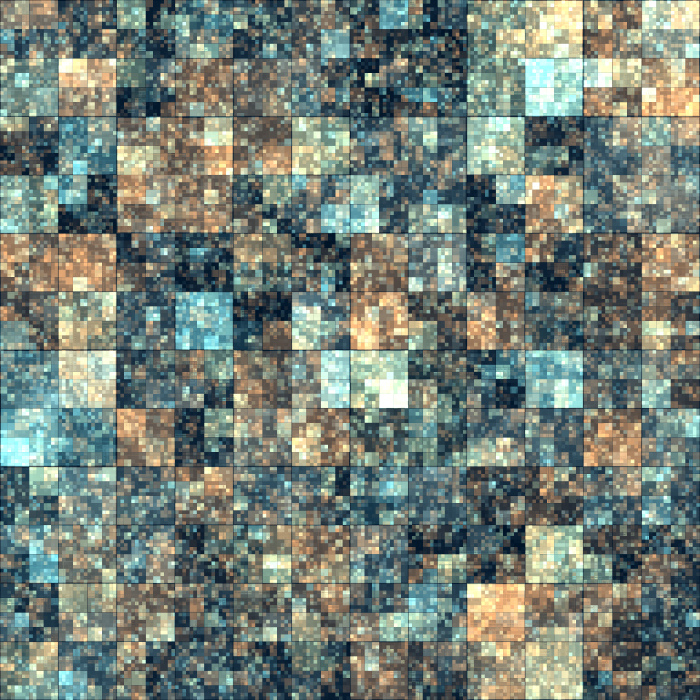 Science, so useful to our lives in so many ways, also usefully supplies metaphors from which we may find comfort or edification.
Science, so useful to our lives in so many ways, also usefully supplies metaphors from which we may find comfort or edification.
An astronomer told me that the galaxy we live in, the Milky Way, was surrounded by a tenuous halo of hot gas. “How can gas stay hot, out there in space?” I asked. “It doesn’t,” he said. “Either it cools and falls [because cold falls, you knew that, didn’t you] slowly into the galaxy. Or maybe it’s already cooled and drops like a brick.”
He didn’t know which: the Milky Way simulated on a computer is too large to show whether things as small as gas clouds were drifting or plummeting. So the small stuff is estimated and put in by hand. “It’s sub-grid physics,” he said, “wave your magic wand at a square in the grid.” Sub-grid physics: the big stuff you know; but the small stuff, you just make shit up. 
Except astronomers don’t make shit up, they try to make honest and educated estimates. I had never heard the phrase sub-grid physics. Grids are a part of computer simulations which are, for astronomical theorists, an effective and faintingly beautiful way of figuring out the universe. Theorists create in software a three-dimensional grid – a cube full of cells – and add millions of particles and gravity and gas and all the physics they can add. Then they run the simulation for months (really), and out comes, say, a galaxy. They check that galaxy against ones that observers see and depending on the outcome, the community decides whether to believe the theory.
In this case, theorists were checking the theory of how the Milky Way formed. The grid sat over a pretend Milky Way whose gas halo is about 100,000 parsecs (1 parsec = 3.26 light years, if you must know) across. In these precisely-detailed, high-resolution simulations, each of the grid’s cells is maybe 100 parsecs on a side – meaning that it can resolve a 100-parsec part of the galaxy. The cooling gas clouds are upward of 10 parsecs across; they probably wouldn’t even be fuzz. So a given theorist might estimate clouds of certain masses and densities and velocities and compositions, then write that physics into the software, and the computer would come up with a Milky Way into which gas clouds are dropping like bricks.
That might be what the real gas clouds are doing, or it might not. And cosmological theorists, unlike physicists, can’t assess the likely correctness of their sub-grid physics and assign a certainty to their results – galaxies are messier than atoms – and a confidence in their beliefs. So theorists have to listen to observers sneer. “Oh,” say the observers, waving theorists’ results away, “that’s just subgrid.”
My whole damn life is subgrid. The big stuff I know: be nice to other people, be responsible to your own people, work hard and have fun; in short, live well and usefully. But the small stuff, the high-resolution details, are sub-grid judgment calls. Exactly which people to be nice to? the neighbor who never helps plan or execute or pay for the street parties and who shows up with a bag of cheap potato chips and expects gratitude? And which are the people I call my own and to whom I’m responsible: my whole entire family, all 6000 of them, even the grandchildren of cousins? And what precisely to work hard at — keeping the basement clean? – and what’s fun anyway? My sub-grid judgments run toward the cranky. And surely that’s not the best way to live well and usefully.
Meanwhile, we’re listening to the people who want us to vote for them in a democratic election. “The will of the people,” the politicans announce, “what Americans want.” Americans want what our Enlightenment founders said we did: enough money, good schools, good health care, a life without fear of crime or war, the decision on how to live and be governed. But the sub-grid on that is just one balance after another. Should you make tons of money in ways that hurt other people? Do you want good schools more or less than you want not to be robbed or bombed? Should government protect the weakest people and what’s “protection” and what’s “weak?” Should government regulate and whom should it regulate and how strictly and toward what end? The answers are individual and philosophical and change with time. No wonder politicians stick to simplicities.
Sub-grid politics is not unlike Michelle’s post last week, with the bloated capitalist confronted by the irrational anarchist, both of whom turn out to be real people in a community full of real people governed by their own desires and moving balances and complexities and nuances.
So what to do? What the cosmological theorists do: keep the grid’s cells as small as possible, and don’t pretend big stuff isn’t going on sub-grid.
_________
Thanks to Tim Heckman of Johns Hopkins, David Weinberg of Ohio State, and James Bullock of UC-Irvine for explaining grids and simulations; and if I’ve misconstrued them, it’s not their fault.
Photos: zyphicore; Patrick Hoesly
It’s not just astronomical simulations that rely on sub-grid scale physics — climate, atmospheric, and oceanic simulations also rely heavily on sub-grid scale modelling (and I’m sure there’s more examples too). It’s a nice metaphor, though, and the fact that the effect/impact of that modelling is reliant on the resolution of the simulation adds another layer to it.
Dear Eight, what does your name mean?
I did know — or at least, I did google — that earth scientists used sub-grid modelling as well. I thought I’d already included as much difficult science as I or the reader could bear.
I’ve read this three times now, Ann, and it both dismays and delights me. Dismays, because it could be construed as a surrender by science handing the ball back to the malign forces of irrationalism (as if they havn’t already got it); and delights, because it shows that there are, after all, more things in heaven and earth, and that gives me hope that we accept that we don’t know ziltch yet and will keep on scratching at the surface.
Tim, there’s a lovely story in a recent Science about the Higgs discovery that says physicists secretly hope they’ll find something weird about the Higgs because they don’t like thinking they know everything in heaven and on earth. There you are, Tim, one with the physicists.
I wasn’t trying to be snarky about it — I think it strengthens the metaphor!
I blog pseudonymously (or whatever blogging-under-the-blog-name counts as), though it’s a bit clunky sometimes. The name comes out of a running joke with my parents, who are the type of person I write my blog for.